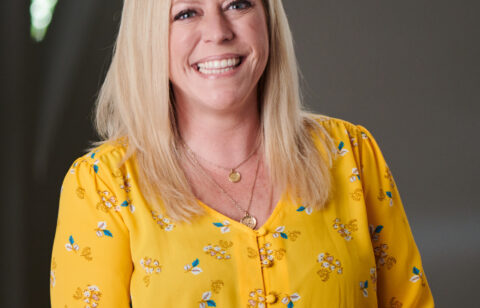The key to getting out of debt is not just making your monthly payments, it’s strategy.
If you’re dealing with a significant amount of debt, especially if that debt comes from multiple different creditors, then having a strategic approach to paying down your debt is doubly important.
That’s because, at the end of the day, your monthly minimum payments don’t actually add up to all that much. Sure, they seem like a lot of money when they’re coming out of your bank account, but when you compare them to the total amount of debt that you owe, they’re barely doing anything except shaving off interest, which is only going to compound again by the end of the next month.
Just making your monthly payments on time isn’t going to make you debt-free anytime soon. However, with strategy and discipline, you can take control of your finances and get out of debt in a reasonable amount of time.
Fortunately, numerous strategies exist that you can take advantage of to pay down your debt and fix your finances. Each has its own pros, cons, and context. Here are some of the more popular strategies for beating debt.
Stop adding to your debt
Before you start to strategize about how to pay off your debt, you need to stop adding to it. Otherwise, you’ll just be digging a deeper hole for yourself as you try to figure out how to pay everything off.
For some people, this process is easy. They got into debt through a combination of accidents, tough circumstances, and bad luck. Maybe they needed to lean on their credit cards too much to weather a medical emergency or to finance a big repair for their home or vehicle. You can’t plan for extraordinary circumstances like these, but luckily, they don’t occur all that often to most people.
Others, though, really struggle with not adding to their debt. These individuals have become so used to using credit cards for just about everything in their lives that quitting credit cold turkey seems next to impossible. Perhaps they were using their credit cards to keep up a certain lifestyle, buying luxury items such as new clothing or financing their fancy nights out on the town. Or, perhaps they use credit to pay for essential things, such as utility bills and groceries, as a way to exert more control over their finances.
No matter how reliant you are on credit, though, you need to do everything you can to cut it out of your life before you can get serious about becoming debt-free. If possible, cut it out entirely, cancelling your credit cards if you have to. Otherwise, you’re just enabling yourself to make more costly mistakes in moments of weakness.
Spend less, earn more
This is obvious advice, right? Sure, it seems like common sense that if you spend less money while increasing your income, you’d have more money to devote to paying down your debts.
However, just saying it doesn’t make it a strategy. A strategic approach entails specific strategies for saving and earning more and then redirecting that money toward paying down your debts.
These strategies don’t have to be especially innovative or difficult. They can be as simple as cutting out your morning latte or not going out every weekend and banking that extra money, or monetizing one of your hobbies to make a little extra money every month. If you put your mind to it, you’ll be surprised how much money you have left over to devote towards paying down your debts.
Pros
This is a simple strategy that you can do yourself. All it takes is a little bit of discipline and creative thinking to find ways to save and earn a little bit more each month. Better yet, these sustainable strategies for increasing your funds will benefit you long after you pay down your debt. If you can figure out where you can cut costs and earn more (say by going after a promotion at work), it’s only going to benefit you in the end.
Cons
If you decide to try to spend less and earn more, you’re on your own. It can be hard, disciplined work for longer hours while denying yourself many of the simple pleasures you look forward to. Further, even with your best efforts, you might not see a whole lot of extra money regardless, meaning you’ll have to be this disciplined for a long, long time. In addition, if you ever fall off the wagon and start to rely on credit again, you’ll undo all the progress you’ve slowly made and find yourself back at square one.
The debt snowball and debt avalanche
The “debt snowball” and “debt avalanche” are actually more like extensions of the last point made, but since they’re so popular and so specific, they’re worth considering on their own.
Simply put, the snowball and the avalanche are strategies for how you should prioritize any extra money you have left over at the end of the month to pay down your debts. Both strategies assume that you’ve been relatively successful with spending less and/or earning more and that you owe money to multiple creditors.
With the debt snowball, you devote that extra money toward paying down the debt with the smallest total balance first (after covering all of your monthly minimum payments, of course). By focusing on the smallest debt first, you eliminate one of your debts as quickly as possible. Not only does this free up more money at the end of the month for paying down your debts (snowballing, as it were), but it gives you an early victory in your war on debt. These kinds of victories are vital for keeping people on track.
The debt avalanche is similar, but you focus on paying down the debt with the highest interest rate first (again, after making sure that your monthly minimum payments are covered). While it can take longer to eliminate one of your debts, you eliminate your most costly debt first, saving you more money in the end.
Pros
The debt snowball and debt avalanche can help give you structure by prioritizing which debts to focus on first. The snowball can help eliminate smaller debts faster while the avalanche can help you get rid of your most costly debts first.
Cons
The cons here are the same as “Spend less, earn more.” You’re on your own with the snowball and the avalanche, and if you can’t find a way to save significant amounts of money to pay down your debts each month, you aren’t going to make much progress.
Bankruptcy
Bankruptcy is a scary word. However, for many people who are in over their heads with debt, this viable solution can change their lives for the better.
Bankruptcy, essentially, is a structure for paying down your debts laid down by a federal bankruptcy court. Under the protection of the court, you pay down some of your debts over a set period. At the end of that period, the rest of your debts go away and you’re able to start over debt-free.
Generally, you qualify for either Chapter 7 or Chapter 13 bankruptcy. Chapter 7 bankruptcy usually involves liquidation of some of your property to pay down portions of your debt. Chapter 13 bankruptcy, meanwhile, is usually a reorganization of your debts where you make structured payments over a period of three to five years. At the end of that repayment period, you’re debt-free.
Which form of bankruptcy is right for you? That depends on your individual situation. Not every type of debt is eligible for bankruptcy, and Chapter 7 often has an income limit.
Pros
The most obvious pro to filing for bankruptcy is that you get rid of all your debts in a timely and organized fashion. Within a few years, if you can keep up with the stipulations of your bankruptcy settlement, you’ll be able to start with a clean slate.
During the repayment period, you should be safe from creditor harassment. You’ll be able to sleep easy knowing that the threatening phone calls and letters from collections agencies will stop.
In addition, even if you settle on a Chapter 7 bankruptcy and have to liquidate some of your assets, there are legal protections to ensure you won’t lose essential things such as your home.
Cons
Not all debt is eligible for bankruptcy, including major debts such as student loans and back taxes.
On top of that, bankruptcy will negatively affect your credit score for at least 10 years, making it extremely difficult to get a credit card or loan for a long time.
Finally, despite the fact that the purpose of bankruptcy is to get you out of debt, it’s still extremely expensive in most cases. You have to pay to file, you need to pay your lawyer, and you need to cover a wide variety of other court costs. It’s not cheap to get out of debt.
Debt consolidation
With debt consolidation, you take all your current debts and consolidate them into one single debt with a single monthly payment.
There are many different forms of debt consolidation, including balance transfer credit cards, personal debt consolidation loans, and debt settlement savings accounts.
With balance transfer credit cards, you apply for a credit card with a 0% introductory APR for a set period. You then use that card to pay off all your other debts, consolidating your payments to a single card. Then, you focus on paying off as much of that card’s balance as possible before the introductory offer ends and the card starts to accrue interest.
With a personal debt consolidation loan, you work with a lender to take out a loan sizeable enough to pay down your various debts. Ideally, that loan will have a lower monthly payment and a more forgiving interest rate than the sum total of your other former debts. In that case, you end up paying less both now and later while putting a set end date on your debt.
With debt settlement savings accounts, you aren’t seeking debt consolidation in the traditional sense. Instead, you’re working with a debt settlement agency, paying into a savings account each month instead of paying off your creditors. You pay into that savings account for a set period, saving up a lump sum of money. At the end of that period, the settlement agency takes that lump sum and uses it to negotiate with your creditors. The creditors have a choice: Take that lump payment or continue to harass you to pay in full. Often, they take the money and forgive the rest of your debt. It’s not the classic form of debt consolidation, but the outcome is the same in that you pay a single monthly payment to become debt-free sooner than you would on your own.
Pros
Debt consolidation helps eliminate the stresses of owing debts to multiple different creditors by consolidating all of your different payments into a single monthly payment. It’s less to keep track of and easier to pay. It’s also often more affordable than what you’d be paying for all of your different monthly minimum payments, and it can make you debt-free much faster than if you tried to tackle your debt on your own.
Cons
Debt consolidation doesn’t work for everyone. You need to be serious about changing your spending habits, or else you’ll just run up your debts again and end up worse off than you were before.
It can also be hard to qualify for many forms of debt consolidation if you don’t have good credit. If your issues with debt have caused your credit score to falter, then it’s going to be hard to gain approval for a new loan or balance transfer credit card.
If you’re ready to explore your options and beat debt for good, contact National Debt Relief today! We have a great track record for helping people live debt-free; just check out our reviews.





